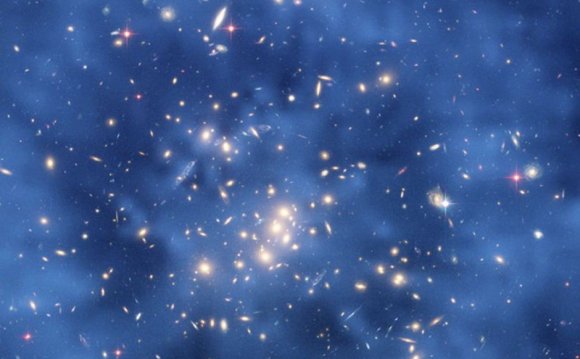
 Dark matter was first identified by Fritz Zwicky who worked at Caltech in 1933. He was famous for astronomy and he made several important discoveries. He discovered that if you look at galaxies in clusters, they orbit around each other. From the speed of the orbit, it is possible to measure the mass (the amount of matter) of the cluster. However, when Zwicky made these calculations, he found that part of the total mass could not be accounted for. Where was it coming from? He believed that there must be some dark material responsible for the extra mass. When these results were first published, they were dismissed because not much was understood about galaxies in clusters.
Dark matter was first identified by Fritz Zwicky who worked at Caltech in 1933. He was famous for astronomy and he made several important discoveries. He discovered that if you look at galaxies in clusters, they orbit around each other. From the speed of the orbit, it is possible to measure the mass (the amount of matter) of the cluster. However, when Zwicky made these calculations, he found that part of the total mass could not be accounted for. Where was it coming from? He believed that there must be some dark material responsible for the extra mass. When these results were first published, they were dismissed because not much was understood about galaxies in clusters.
In the 1970s, Vera Rubin and her team found that even if you look at one galaxy, it still moved much faster than expected. This was even harder for astronomers to explain. But, it did get people’s attention and led to more research on this topic.
What we know now about dark matter is that it isn’t anything like ordinary matter. It’s not planets, it’s not stars, it’s not black holes, and it’s not puppies. Dark matter does not absorb light or produce light. But, it does control where other matter comes together to form galaxies, planets, stars, and even people! We are here because dark matter has so much mass that it drew in the gases that formed our galaxy and everything in it. Continuing to study dark matter may open up new fields of science that will help us understand what we’re made of. It may also help us better understand how our universe works.
INTERESTING VIDEO











